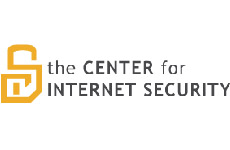Hubbard Radio Washington DC, LLC. All rights reserved. This website is not intended for users located within the European Economic Area.
On Air: Federal News Network
Technology
-
As military operations becoming increasingly urban centric - soldiers\' ability to locate combatants is severely hindered as enemies may retreat and hide inside buildings. The Army has been developing the capability to locate potentially hostile targets with sense-through-the-wall (or S-T-T-W) technology. Newly developed sensors weigh less than six pounds and can be operated up to 20 meters away from a wall, providing information for warfighters regarding the number and locations of hidden adversaries. Researchers continue to develop ways to detect humans, concealed weapons and explosives and other devices of interest in complex and urban terrain through partnerships with the Army Research Lab and the Defense Advanced Research Projects Agency.
December 14, 2010 -
High-resolution computer systems capable of networking around the world are being used by researchers at the Air Force Research Lab to build a new supercomputer. It holds the distinction of being one of the cheapest - and one of the greenest - supercomputers in the world because the systems being used are Sony PlayStation 3 game consoles - over 17-hundred of them. It\'s called the Condor Cluster project and it\'s being built entirely from off-the-shelf commercial components. Its creators say it could change the supercomputing landscape. The system is capable of making 500 trillion calculations per second -- and represents new ways for supercomputers to increase computational resources while using less energy. The Condor is currently considered the seventh-greenest computer in the world. It cost only 2 million dollars to build, whereas the cheapest comparable supercomputers would cost $50 million or more.
December 14, 2010 -
The Department of Energy has given out the largest ever awards of the Department\'s supercomputing time to 57 innovative research projects. Computer simulations will be used to perform virtual experiments that in most cases would be impossible or impractical. Using two world-leading supercomputers with a computational capacity roughly equal to 135,000 laptops, officials say the research could, for example, help speed the development of more efficient solar cells, make improvements in the production of biofuels, or develop medications that can help slow the progression of certain diseases. Selected projects were chosen for their potential to advance scientific discoveries, speed technological innovations, and strengthen industrial competitiveness.
December 14, 2010 -
The Center for Internet Security is trying to establish universal metrics for cybersecurity functions. We talk with Steve Piliero, the chief technology officer of CIS. December 9, 2010
December 14, 2010 -
Former USDA CIO Anne Reed responds to OMB\'s plan to reform IT management.
December 14, 2010 -
Chris Kemp, CTO for IT at NASA, joins host John Gilroy to discuss the agency\'s Nebula Cloud Platform. December 14, 2010
December 14, 2010 -
The National Institute of Standards and Technology has a new way of managing risks.
December 14, 2010 -
Attorney John Mahoney explains the threats to security clearances if you access WikiLeaks.
December 14, 2010 -
With the new telework bill signed into law, federal employees will soon have more opportunities to telework, and agencies have more incentive to invest in or increase their telepresence options. After the Senate passed the bill in September, the House followed suit in November. It was signed into law last week, and encourages federal employees to telework. Currently, about 5 percent of federal employees participate in some sort of telework plan, and agencies will have to improve their existing technology capabilities and options to meet the increase in participating employees. \"We\'re talking about bringing the government into the 21st century from a technology point of view and every other point of view,\" said bill sponsor Rep. Frank Wolf (R-Va.) in an interview with Federal News Radio last month. \"The technology is moving so aggressively there\'s no reason not to have a good telework policy,\" Wolf said. Video teleconferencing is already a component of telework programs at many agencies, and has in some cases enabled greater allowance for teleworking. At the Defense Information Systems Agency, the desktop- and laptop- based telepresence has \"enabled our telework program to thrive, allowing DISA employees to fully participate in meetings, no matter where they are located,\" Colonel Brian Hermann, chief of the Net-Centric Enterprise Services branch. \"It allows off-site employees to \"participate fully in small-group meetings, including the use of whiteboarding and sharing presentations,\" Hermann said. Will other agencies follow suit? Stay tuned. Navy adding telepresence at National Naval Medical Center The National Naval Medical Center in Bethesda is looking to install a video teleconferencing room which will serve as the Admiral\'s Conference room. The conference room will be used for executive-level video teleconference and Board of Directors meetings, among others according to a solicitation posted to FedBizzOpps.gov.
December 14, 2010 -
The Government Printing Office and Google are now offering more than 100 electronic titles of federal government publications.
December 14, 2010 -
A competition to find a replacement for one of the gold-standard computer security algorithms used in almost all secure, online transactions just heated up.
December 14, 2010 -
Sri Lanka Information Communication Technology Agency (ICTA) has launched a national CERT (Computer Emergency Response Team) to act as the focal point for Cyber security for the nation.
December 14, 2010 -
The nation\'s No. 2 military officer strongly endorsed the warfighting value of information-sharing.
December 13, 2010 -
Thomas McNamara, former program manager for Information Sharing Environment joined Chris Dorobek on The Dorobek Insider.
December 13, 2010
ASK THE CIO

THURSDAYS @ 10 & 2 p.m.
Weekly interviews with federal agency chief information officers about the latest directives, challenges and successes. Follow Jason on Twitter. Subscribe on Apple Podcasts or Podcast One.






